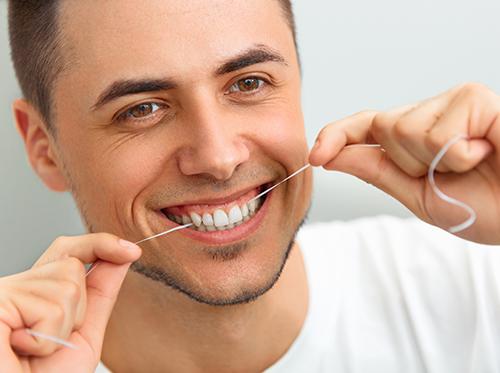Why Are My Child’s Baby Teeth So White?
- posted: Apr. 30, 2024
One of the most charming aspects of your baby’s beautiful smile is his brilliantly white teeth. But now that his adult teeth are coming in, the difference in color is Read More
Snack Attack
- posted: Apr. 23, 2024
Should a quick bite between meals make us feel guilty? Or worse, make our teeth suffer a greater risk of cavities? Let’s avoid both those possibilities! We have several tooth-healthy Read More
Make Every Day Earth Day
- posted: Apr. 16, 2024
Earth Day began in 1970 as an event to raise awareness of our environment. What began as a single day in April is now recognized around the world to bring Read More
Top Five Dental Myths
- posted: Apr. 09, 2024
Sometimes the line between fact and fiction is easily blurred. This is certainly the case when it comes to dentistry, where myths and misconceptions abound. In a bid to put Read More
Oral Cancer Awareness Month
- posted: Apr. 02, 2024
Happy Oral Cancer Awareness Month! We know oral cancer can be kind of a scary topic, but it’s worth using this opportunity to learn about the disease and spread knowledge Read More
The Many Types of Sedation Dentistry
- posted: Mar. 26, 2024
There are many reasons to choose sedation dentistry. Perhaps anxiety is an issue, or your teeth are extremely sensitive. You may have a low pain threshold, an easily triggered gag Read More
How many times a day should I floss?
- posted: Mar. 19, 2024
Flossing is one of the most important parts of your oral care routine. Many patients know they need to do it but find it difficult to fit into their busy Read More
Going Green for St. Patrick’s Day?
- posted: Mar. 12, 2024
Happily for all of us who like to celebrate with friends and family, there’s no need to be Irish to enjoy St. Patrick’s Day. Every March 17th, many of us Read More
Good Nutrition Leads to Healthy Mouths
- posted: Mar. 05, 2024
At Dr. Stephanie ML Wong, DMD, Inc., we know the most common oral health diseases are tooth decay and periodontal disease (or gum disease), and both are among the easiest Read More
Radiation and the Safety of Dental X-Rays
- posted: Feb. 27, 2024
It is not uncommon to be concerned about your safety when you have dental X-rays performed. Putting on a heavy lead vest may make you apprehensive. The benefits of dental Read More
The Origins of Valentine's Day
- posted: Feb. 13, 2024
When we think of Valentine’s Day, we think of cards, flowers, and chocolates. We think of girlfriends celebrating being single together and couples celebrating their relationship. We think of all Read More
Diastema, or, Mind the Gap!
- posted: Feb. 06, 2024
Diastema is a medical term meaning “space between”—or what the doctor and our team less formally call a gap between the teeth. Such gaps are common for children as they Read More
Why You Should Avoid Energy and Sports Drinks
- posted: Jan. 30, 2024
In a world where everything moves so quickly and teens and young adults find themselves pulling “all-nighters” or working long hours, energy drinks have grabbed the spotlight. You’ll have one Read More
The Importance of Baby Teeth
- posted: Jan. 23, 2024
the doctor and our team know it can be easy to underestimate the significance of baby teeth. At Dr. Stephanie ML Wong, DMD, Inc., we sometimes meet parents who assume Read More
Whitening Teeth with Braces
- posted: Jan. 16, 2024
Now that you are working hard to improve your dental health and appearance with your braces, it might seem like a logical time to whiten your teeth as well. But Read More
Floss? Sticks? Picks? Which Should You Choose?
- posted: Jan. 09, 2024
You might have noticed that the dental aisle of your drugstore is larger than ever, with more options than ever for getting the spaces between your teeth their cleanest. Flosses Read More




















